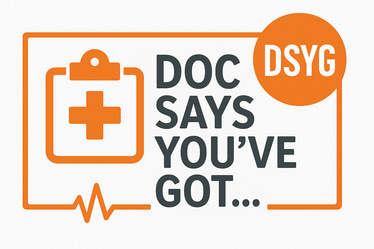
Chiari Malformation
Chiari Malformation (pronounced kee-AHR-ee) is a condition where a part of your brain—called the cerebellar tonsils—slips downward into the space where your spinal cord begins.
This space is already tight, and when brain tissue gets pushed down into it, it can put pressure on your spinal cord and block the normal flow of cerebrospinal fluid (CSF)—the fluid that cushions your brain and spinal cord.
There are different types of Chiari malformation, but the most common is Type I, often discovered in young adults who’ve been struggling with headaches, dizziness, or weird neurological symptoms that didn’t make sense until now.
DSYG You’ve Got Chiari Malformation...
Chiari Malformation is usually something you were born with, but it might not cause symptoms until your teens, twenties, or thirties.
Here are a few contributing factors: A skull that’s slightly too small or shaped in a way that crowds the lower part of the brain; Connective tissue disorders that affect structural support; Sometimes, it shows up on an MRI done for headaches or dizziness—even if you weren’t expecting it; In rare cases, it can be acquired after trauma, infection, or surgery, but most people with Chiari Type I had it from birth and didn’t know it.
What Can You Do About It?
First: not everyone with Chiari needs surgery. Some people have a “low-lying cerebellar tonsil” and no symptoms. If you're not having trouble, doctors may just monitor you over time.
If you do have symptoms, especially:
Daily headaches (worse with coughing, laughing, or straining)
Neck pain, balance problems, or dizziness
Numbness, tingling, or weakness in your hands or feet
Trouble swallowing or pressure behind your eyes
—then surgical treatment may be considered.
The most common procedure is a posterior fossa decompression, which creates more space at the base of the skull and helps restore normal CSF flow.
When Should You Be Concerned?
🚨 Worsening occipital (back-of-head) headaches
🚨 New numbness or weakness, especially in your arms or legs
🚨 Balance problems or sudden dizziness
🚨 Tingling down your spine when you cough, laugh, or sneeze (called a Valsalva-induced paresthesia)
🚨Vision problems or difficulty swallowing
If your symptoms are progressing—or your MRI shows a significant herniation—don’t ignore it. Surgery isn’t always necessary, but an evaluation by a neurosurgeon who’s experienced in Chiari is.

